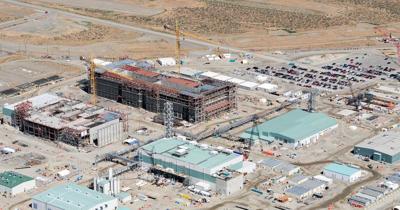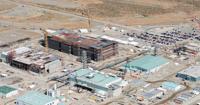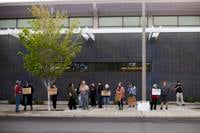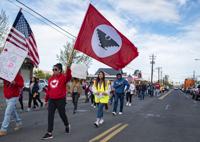RICHLAND, Wash. — Earthquakes. Floods. Volcanoes.
All are risks the Department of Energy evaluates at the highly contaminated Hanford nuclear reservation, with the latest focus on volcanic ash.
“Natural hazards and nuclear facilities do not always go together,” Stephen McDuffie, an engineer who examines such hazardous scenarios for DOE, said at a recent talk at Washington State University Tri-Cities.
Hanford has aging structures that date from as early as World War II, when the nation raced to produce plutonium for a nuclear weapons ahead of Nazi Germany.
It also is continuing to build facilities needed to treat radioactive waste left from plutonium production that continued through the Cold War.
A second study on how the $17 billion vitrification plant under construction at Hanford would handle ashfall from a volcano is close to completion, McDuffie said.
Volcanic ash is not an issue for most sites, he said. But Hanford risks include Mount St. Helens, which dumped heavy, gritty ash across Eastern Washington when it erupted in 1980. The Tri-Cities received a dusting of ash, but The Associated Press reported 6 inches in Ritzville.
NASA noted that ash remained thick in the atmosphere for several days over Hanford, primarily as a result of ash on the ground being disturbed.
The U.S. Geological Survey did an analysis in 2011 that DOE used to show that Hanford can expect to see an ashfall every 1,000 years of about 0.4 inch. Every 10,000 years it can expect an ashfall of four inches.
The big concern at Hanford is clean air, McDuffie said.
High level radioactive waste in tanks inside the plant must be kept well mixed to prevent the risk of an uncontrolled nuclear reaction or a buildup of flammable hydrogen. The mixing system uses compressed air to keep the waste mixed by suctioning it up and then forcefully expelling it, similar to the way a turkey baster works.
DOE commissioned a study from Pacific Northwest National Laboratory looking at what would happen with concentrations of ash days after an event, with the results going to Bechtel National to make sure the vitrification plant could withstand a 10,000-year event.
“They came back and said this is going to be very hard — and expensive— because this is a lot of ash,” McDuffie said.
It appeared the price would be exorbitant, he said.
But DOE compared the basic numbers for the ashfall in the study with real eruptions around the world and how ash resuspended in the air after those eruptions. It concluded that assumptions for the study had not been realistic, McDuffie said.
“We decided to go back to the drawing board and do all new ashfall studies,” he said.
The new study started at square one, using a tool recently developed by the U.S. Geological Survey for making estimates of ashfall and how much ash would contaminate the air, he said.
“This analysis is almost done and we are pretty confident that is going to give us some numbers that are easier to live with than those numbers from 2012,” McDuffie said.
The study results are not expected to affect the start up of treatment of low-activity radioactive waste at the plant by a court-ordered deadline of 2023. The big concern is high level waste.
Whether the plant could withstand a severe earthquake has been evaluated previously, with construction stopped at parts of the plant in 2006 for much of the next two years to make sure that the plant was designed to withstand a severe earthquake.
Concerns had been raised about plant design standards that had been established in 1999 on a seismic hazard analysis completed in 1996. Some limited testing in 2004 prompted by concerns of the Defense Nuclear Facilities Safety Board showed that the subsurface beneath the plant dampened earthquakes less than originally thought.
A more recent in-depth study launched in 2012 used newly available information about seismic activity in the area and its geology to replace the 1996 analysis.
DOE looked at risks at its older facilities after the 2011 disaster at Fukushima, Japan, when an earthquake and tsunami took out cooling systems and led to nuclear meltdowns in three reactors.
At Hanford, the most vulnerable facility was determined to be the water-filled concrete pool holding nearly 2,000 capsules of radioactive cesium and strontium, McDuffie said. The capsules contain about a third of the radioactivity of the waste at Hanford.
A severe earthquake could crack the pool and allow the water used to help cool the capsules to drain out, likely over a period of days.
A project is underway that will allow the capsules to be moved to dry storage.
The flooding hazard at Hanford is associated not with routine fluctuations of water in the Columbia River, but with the risk of failures of dams upstream from Hanford, McDuffie said.









(0) comments
Comments are now closed on this article.
Comments can only be made on article within the first 3 days of publication.